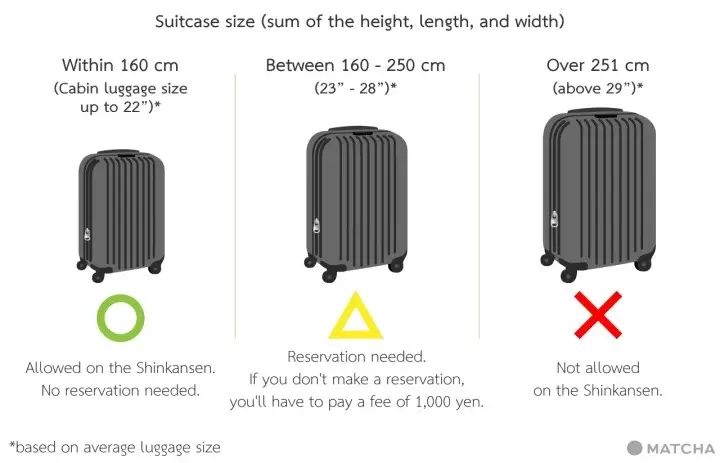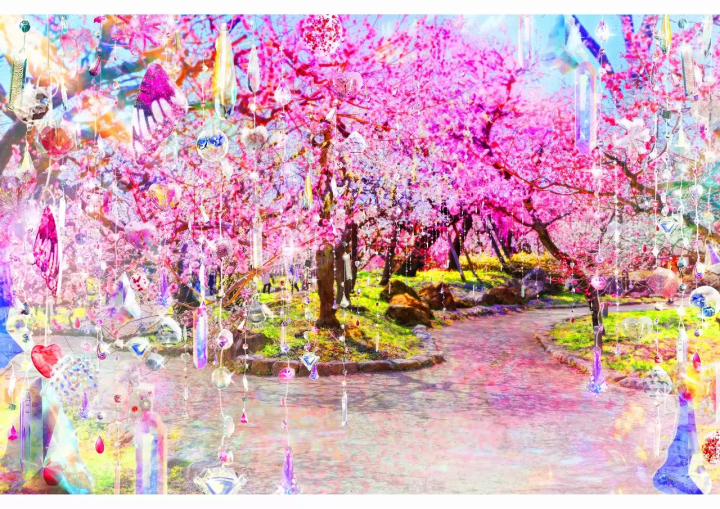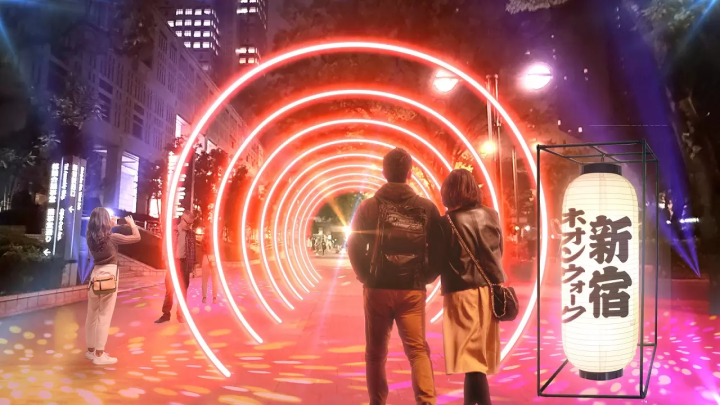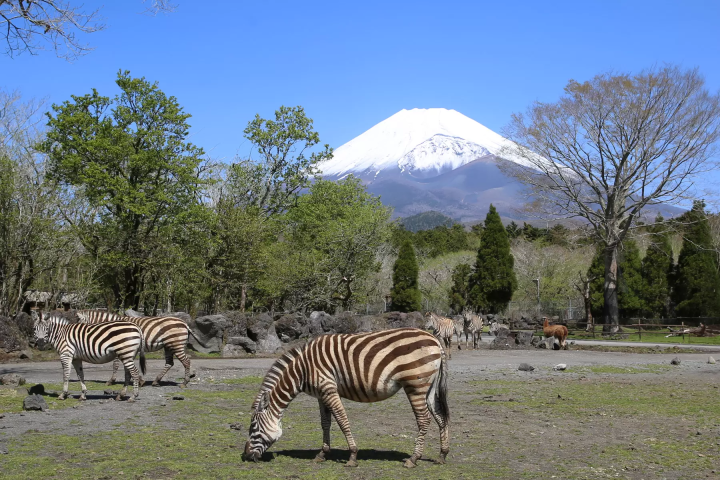Tokyo to Kyoto by Shinkansen and Bus: Fast and Easy Travel

Learn how to buy Shinkansen (bullet train) tickets to travel from Tokyo to Kyoto, fares, timetables, and tips on cheaper travel methods such as the highway bus.
Tokyo to Kyoto: The Best Ways to Travel
The distance between Tokyo and Kyoto is approximately 455 km.
There are several ways to travel from Tokyo to Kyoto: the Shinkansen (bullet train) is the fastest option, while traveling by bus is the cheapest. Air travel and regular trains are also available, although they are less recommended.
In this article, we will compare all the travel methods between Tokyo and Kyoto, highlighting their pros and cons. We will also provide information on tours, tips for luggage delivery, and more.
Tokyo to Kyoto: Travel Time and Fare Comparison
1. For Those Who Want to Save Time: Shinkansen, the Fastest Way
- How to Buy Shinkansen Tickets
- Be Careful: Shinkansen Fares Vary by Train Type!
- Shinkansen Timetable and Where to Board the Train
- How to Handle Large Luggage on the Shinkansen
- How to Travel Using the JR Pass from Tokyo to Kyoto
2. For Those Who Want to Save Money: Highway Bus or Regular Train Travel
- Highway Bus and Night Bus: Cheap but Less Comfortable
- By Regular Train: Cheap but Long Ride
3. For Hasslefree Travel: Join a Tour from Tokyo to Kyoto
4. By Airplane: Least Recommended
For Those Who Want to Save Time: Shinkansen, the Fastest Way
| Pros | Cons |
| - travel time is the shortest at 2 hours and 11 minutes | - tickets are rather expensive: 13,320 yen for an unreserved seat on the Nozomi, the fastest Shinkansen |
| - bullet trains depart every 10 minutes during the day | - restrictions on oversized luggage |
The Tokaido Shinkansen is the fastest way to travel between Tokyo and Kyoto, with bullet trains departing every 10 minutes during the day.
It is also possible to travel via the Hokuriku Shinkansen Line, which passes through the northern part of Japan's main island, stopping at Nagano and Kanazawa. However, this route is more time-consuming and is recommended primarily for those who wish to explore additional regions rather than focusing solely on Tokyo and Kyoto.
The disadvantage of Shinkansen travel is that tickets are expensive. Moreover, oversized luggage needs to be checked in and stored in a designated area during the ride. Jump to the section on How to Deal with Oversized Luggage on the Shinkansen for detaiks.
How to Buy Shinkansen Tickets
Shinkansen tickets can be purchased through the official Tokaido Shinkansen website or online booking platforms like Klook.
If you prefer physical tickets, you can opt to pick them up at your departure station. Additionally, it is now possible to enter the Shinkansen ticket gates using a digital QR code displayed on your smartphone.
For more information on how to book Shinkansen tickets, please refer to the article below.
Be Careful: Shinkansen Fares Vary by Train Type!
There are three types of Shinkansen operating between Tokyo and Kyoto: Nozomi, Hikari, and Kodama. Please be aware that travel times and fares vary for each type of Shinkansen.
| Shinkansen Type | Fare | Travel Time |
| Nozomi | 14,370 yen | 2 hours and 11 minutes |
| Hikari | 14,050 yen | 2 hours and 39 minutes |
| Kodama | 14,050 yen yen | 3 hours and 40 minutes |
*The fares shown in this table are for reserved seats.
The Hikari and Kodama bullet trains operate at lower speeds than Nozomi. Moreover, they stop at more stations on the way between Tokyo and Kyoto.
So if you want to ride the fastest Shinkansen and minimize the time you spend traveling, then take a Nozomi bullet train.
Shinkansen Timetable and Where to Board the Train
During the day, approximately 10 Shinkansen depart from Tokyo Station to Kyoto each hour.
The earliest Shinkansen for Kyoto departs from Tokyo Station at 6:00 AM. The last Shinkansen for Kyoto departs at 21:24.
If you travel from Kyoto to Tokyo, the earliest Shinkansen departs at 6:14 AM and the last bullet train departs at 21:38.
If you're taking the Shinkansen from Tokyo, your train will depart from one of the platforms between 14 and 19.
Please note that it's also possible to board the Shinkansen for Kyoto from Tokyo's Shinagawa Station. We recommend this departure point to those who land at Haneda Airport and want to head for Kyoto right away. At Shinagawa Station, the Shinkansen platforms are 23 and 24.
If you travel to Tokyo from Kyoto Station, you'll be using platforms 11 or 12.
How to Handle Large Luggage on the Shinkansen

Shinkansen trains have designated areas for storing oversized luggage, defined as items with a combined total measurement (length, width, and height) between 160 centimeters and 250 centimeters, which is similar to the size of checked baggage on international flights.
To bring oversized luggage on the Shinkansen, you must make a reservation in advance when purchasing your ticket, either online or at the ticket office. Using the oversized luggage area does not incur an additional fee; however, if you do not reserve in advance, there will be a charge of 1,000 yen.
Please note that luggage exceeding the specified size cannot be brought onto the Shinkansen.
If you have such oversized items, it is recommended to use a delivery service, like Yamato, to send them to your destination. You can also ask the staff at your hotel for assistance with sending oversized luggage.
Travel Using the JR Pass from Tokyo to Kyoto
The Japan Rail Pass is a great deal for those who plan to travel extensively in Japan using JR trains. However, if you plan to explore only Tokyo and the Kyoto-Osaka-Nara area, buying regular Shinkansen tickets is cheaper.
Fare Comparison
Japan Rail Pass for 7 days: 50,000 yen
Tokyo - Kyoto (roundtrip with reserved seat): 14,370 yen × 2 = 28,740 yen
Kyoto - Osaka: 580 yen
Osaka - Nara: 820 yen
Even if you travel back and forth between Kyoto, Osaka, and Nara a few times, it's still cheaper compared to the JR Pass.
However, if you already bought the JR Pass, please be aware that you'll need an additional ticket to board Nozomi bullet trains, which are the fastest. This ticket is called "ONLY WITH JAPAN RAIL PASS: Nozomi Mizuho Ticket" and costs 4,960 yen.
The slower Hikari and Kodama bullet trains don't require an additional ticket from JR Pass holders. You can board them by simply showing your pass to the staff at the ticket gates.
For details on the JR Pass please refer to the article below.
2. For Those Who Want to Save Money: Highway Bus or Regular Train Travel
If you're seeking the most economical way to travel from Tokyo to Kyoto, you have two options:
1. Taking a highway bus or a night bus.
2. Travel by regular train
Check the pros and cons for each of them below.
Highway Bus and Night Bus: Cheap but Less Comfortable
| Pros | Cons |
| - tickets are cheap, priced between 5,000 and 10,000 yen | - the travel time is long: 7 hours and a half to 8 hours |
| - it's quite uncomfortable because you cannot stand |
A highway bus ride from Tokyo to Kyoto costs between 5,000 yen and 10,000 yen, depending on how early you book and the comfort level of the bus seats. This option is the most economical way to travel between the two cities.
However, please be aware that the travel time is approximately 8 hours. If you prefer not to spend an entire day on the bus, you might consider taking a night bus. These buses typically depart from Tokyo between 23:00 and 24:00 and arrive in Kyoto between 6:00 and 7:00 the next morning.
Additionally, the bus seats can be uncomfortable, as they offer limited space for movement.
We recommend this travel option for students and backpackers who are in good physical condition and can recover quickly after an 8-hour bus ride.
Typically, there is a 30-minute stop at a rest area along the way, allowing passengers to stretch their legs and use the restroom (some express buses also have onboard toilets). These rest areas often feature shops selling local products, making for a fun and unique experience.
How to Buy Bus Tickets for Tokyo - Kyoto
Highway bus tickets for rides between Tokyo and Kyoto can be booked online. We recommend WILLER TRAVEL, which has an English interface.
After completing your online booking, you receive a QR code, which you need to display on your smartphone when boarding the bus.
Bus tickets can also be purchased at the ticket offices with bus terminals.
In Tokyo, the major bus terminals with departures for Kyoto are the Tokyo Station Bus Terminal near the Yaesu Exit and the Shinjuku Bus Terminal near Shinjuku Station's South Exit.
The Kyoto Highway Bus Terminal is located near the Kyoto Station Hachijo Exit.
By Regular Train: Cheap but Long Ride
| Pros | Cons |
| - cheaper than Shinkansen: about 8,360 yen in total | - travel time is long: 9 to 10 hours |
| - you can use discount tickets like the Seishun 18 Kippu | - no direct train; you need to change trains 4 to 6 times |
Traveling by regular train from Tokyo to Kyoto is not impossible but we don't recommend it unless you want to leisurely enjoy other destinations on the way.
If you stick to JR lines, the total travel fare will be about 8,360 yen to 8,910 yen, with slight variations depending on the route you take.
As an example, here's a route that goes past Mt. Fuji on its southern side:
Tokyo → Atami → Hamamatsu → Toyohashi → Maibara → Kyoto
Total travel time: 8 hours and 23 minutes
Transfers: 4
Fare: 8,360 yen
On the other hand, it is also possible to go past Mt. Fuji through a northern route via Nagano:
Tokyo → Otsuki → Shiojiri → Nakatsugawa → Nagoya → Kyoto
Total travel time: 10 hours and 57 minutes
Transfers: 5
Fare: 8,910 yen
If you would like to explore other cities and regions on the way from Tokyo to Kyoto across several days, then traveling by regular trains is a great choice.
Tip: Use a Discount Ticket like Seishun 18 Kippu
The Seishun 18 Kippu is an economical travel pass designed to encourage younger travelers to explore various regions in Japan during holidays. However, this ticket can be used by individuals of any age and nationality.
The price for the ticket is 11,500 yen, applicable to both adults and children.
This pass allows passengers to hop on and off trains as they wish, using non-reserved seats in ordinary cars on any local or rapid JR train in Japan. Please note that an additional charge applies for traveling on limited express trains, which are not covered by this ticket.
It’s important to note that the Seishun 18 Ticket is available for purchase only three times a year and has a limited validity period as follows:
Spring
Sales Period: February 20 - March 31
Validity Period: March 1 - April 10
Summer
Sales Period: July 1 - August 31
Validity Period: July 20 - September 10
Winter
Sales Period: December 1 - December 31
Validity Period: December 10 - January 10
The Seishun 18 Ticket can be purchased at the JR ticket offices within major JR stations.
3. For Hasslefree Travel: Join a Tour from Tokyo to Kyoto
| Pros | Cons |
| - no need to book anything yourself, no stress | - higher cost |
| - with a tour guide, you discover things about Kyoto that you couldn't have found alone | - need to respect tour schedule, less freedom to explore |
Visiting Kyoto on a guided tour departing from Tokyo is an excellent option for those who prioritize comfort over cost.
Travel professionals handle the booking of train tickets, dining reservations, admission tickets to attractions, and hotels in the event of a multi-day trip. This allows you to relax and fully enjoy your experience without the hassle of planning and logistics.
Recommended Tours from Tokyo to Kyoto
Kyoto tours departing from Tokyo can be easily found online on platforms like GetYourGuide and Viator, or at travel agencies within Japan.
If your time in Japan is limited and you can only visit Kyoto for a day, consider this tour offered by Viator. You’ll travel to Kyoto by Shinkansen and enjoy lunch at a hotel near Kyoto Station.
The tour includes visits to two famous landmarks: Fushimi Inari Taisha and Kiyomizudera Temple. With the guide's insightful explanations about the city’s history, you’ll learn a great deal about Kyoto, including things that might be difficult to discover on your own.
4. By Airplane: Least Recommended
| Pros | Cons |
| - it's comfortable | - the nearest airport is quite far from Kyoto |
| - you can see Mt. Fuji from above on clear days | - the total fare is more expensive than the bullet train |
Kyoto does not have its own airport. If you wish to travel by plane, you will need to fly into either Kansai International Airport (KIX) or Osaka Itami Airport, which only handles domestic flights. From either airport, you can transfer to Kyoto by train or bus.
Flight fares start at 6,670 yen for low-cost carriers like Jetstar and Peach. Economy class flights operated by JAL or ANA cost about 14,560 yen. For flight reservations use Skyticket.
How to Get to Kyoto from the Airport
At first glance, flying from Tokyo to Kyoto may seem just as convenient as traveling by bullet train. However, it's important to consider the fares and travel times required to reach Kyoto from the airport.
From Kansai International Airport to Kyoto Station, the limited express Haruka takes approximately 1 hour and 20 minutes and costs 3,110 yen. If you fly into Itami Airport, the bus journey to Kyoto Station takes about 50 minutes and costs 1,340 yen. Alternatively, taking the monorail or train from Itami Airport takes around 1 hour and costs approximately 1,000 yen.
Additionally, traveling by bus from Tokyo Station to Narita Airport costs around 1,300 yen, while a train ride to Haneda Airport is 686 yen.
When you factor in all these costs, flying with a low-cost carrier to Kansai International Airport may amount to more or less the same cost as taking the Shinkansen. But if you think of the total travel time, the Shinkansen is the better option.
Choose Your Best Way to Travel from Tokyo to Kyoto
There are multiple ways to travel to Kyoto from Tokyo. We recommend the Shinkansen for speed and comfort, while the highway bus is ideal for inexpensive prices.
Please select the method that best fits your schedule and budget for a fulfilling stay in Japan.
FAQ
Are there periods when tickets for the Shinkansen (bullet train), plane, or highway bus are cheaper or more expensive?
LCCs (low-cost carriers) like Jetstar and Peach will occasionally have sales. Please check the respective LCC website for details. Moreover, prices for the Shinkansen, airlines, and highway buses will increase during periods when Japanese people tend to travel, including Golden Week (typically around April 27-May 6), Obon (around August 10-19), and the New Year’s holiday (around December 28-January 6). For example, Shinkansen prices usually increase by 400 yen for reserved seats on the Super Express during Golden Week. A source of stress during this period is being unable to get any tickets because everything is sold out. Even driving might end up with you sitting in congested traffic on the expressway during this time. Be sure to make your reservations early and check traffic information beforehand when traveling during peak seasons.
What’s the best option when traveling to Kyoto by Shinkansen from Tokyo? Boarding the train from Tokyo Station or Shinagawa Station?
The train will arrive at Kyoto Station five minutes earlier from Shinagawa, but there isn’t any price change. However, Shinagawa Station is only 15 minutes by train from Haneda Airport. It would be better to use Shinagawa Station if you’re traveling from Haneda Airport.
What highlights does Kyoto Station have?
Kyoto Station is not only a transportation hub but also a popular sightseeing spot. The architecture is stunning and thoughtfully designed to reflect the city's grid system, a classic feature of Heiankyo, which was Japan's capital from 794 to 1869 (present-day Kyoto). From the Skyway walkway above the station, visitors can enjoy expansive views of the streets of Kyoto. There are various shopping facilities inside the station building and many gourmet food spots like Kyoto Ramen Koji.
Are there any discount ride passes when traveling around Kyoto?
You can use the Subway and Bus One-Day Pass in Kyoto for unlimited rides on municipal subways and buses. Another discount ride pass that overseas visitors can use is the JR Kansai WIDE Area Pass for unlimited rides on any JR line in the Kansai region, which includes Kyoto, Osaka, Nara, Kobe, and other areas.
Ramona, English content editor at MATCHA since 2016, has been practicing ikebana flower arrangement (Ikenobo School) and tea ceremony (Omote Senke) since 2012. She arrived in Japan in 2012 as a graduate student with a focus on Japanese literature and performing arts. As a travel editor and writer, Ramona has visited and documented 40 of Japan's prefectures with a focus on art, history, traditional Japanese crafts, and performing arts.













































![[Reopening in March 2026] Ikoma Sanjo Amusement Park Park, 45 minutes from Osaka , with free admission](https://resources.matcha-jp.com/resize/720x2000/2024/08/28-194409.webp)
![[Gunma] 5 recommended gourmet foods at Kawaba Denen Plaza Roadside Station!](https://resources.matcha-jp.com/resize/720x2000/2025/02/26-225970.webp)
![[Kanazawa] Enjoy the world of gold leaf to the fullest in the city with the highest production volume in Japan](https://resources.matcha-jp.com/resize/720x2000/2025/11/12-249564.webp)
![[2026] Family Winter Trip to Suzuka Circuit! – For Both Day trips and Overnight Stays!](https://resources.matcha-jp.com/resize/720x2000/2025/12/26-254097.webp)
